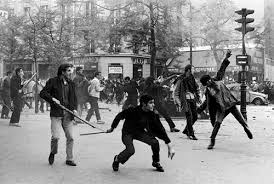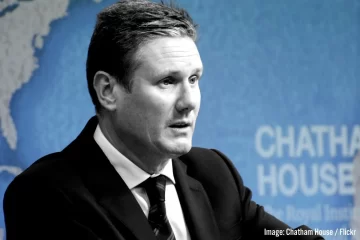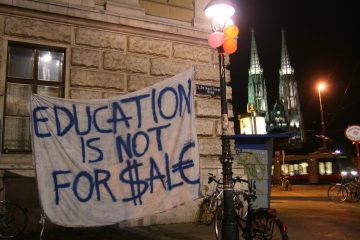Originally posted by our comrades in Socialist Revolution, the US section of the International Marxist Tendency. Follow socialistrevolution.org for more US news.
Last week, a devastating winter storm hammered Texas and wreaked havoc on 90% of the state’s energy infrastructure. The crisis caused a loss of heat, unreliable water utilities, and structural damage to homes. A projected four million people were without power at one point. Nearly 70 deaths have been attributed to this disaster, and magnitudes more are experiencing hardships and desperation.
In a state known for its energy production, the crisis initially took some people by surprise. But the cause of the devastation became clear soon enough. The entire energy production and distribution sector for most of Texas is privatized and deregulated. The state’s grid infrastructure is separate from the Eastern and Western interconnection grids, which are federally regulated. For energy companies, it is preferable not to have a governing body able to “meddle” with the state’s energy operations.
Energy industry leaders and their lackeys in the Texas political leadership have, in effect, isolated the state’s energy infrastructure to the benefit of a network of private energy companies, who have made nice profits from the deregulated system. This arrangement has repeatedly come at the expense of the working population of the state.
Energy industry leaders have isolated the state’s energy infrastructure to the benefit of a network of private energy companies, at the expense of the working population of the state / Image: Roy Luck
In recent years, Texas has experienced a rise in extreme cold-weather events—along with a consistent record of energy infrastructure failures during such events, particularly in 1989 and 2011. Natural gas plants, windmills, and electrical transmission equipment have buckled under previous cold-weather storms. The 2011 storm prompted a detailed analysis by the Federal Energy Regulatory Commission (FERC) and the North American Electric Reliability Corporation (NERC) of the causes of the energy infrastructure’s failure. The report gave precautions and made data-driven recommendations to winterize the equipment in electric production and transmission.
But against all warnings and advice informed by previous experience, the grid’s private owners and managers made no effort to prepare for the latest entirely avoidable crisis. The industry did not meaningfully winterize its operational equipment at any level. In a rational system, this never would have happened. But in an economy driven solely by the profit motive, preparing for these kinds of events is not profitable for the capitalists. From their perspective, winterizing is not worth the expense when considering the relatively low frequency of these winter events. Instead, they place the risk on the shoulders of their “consumers.”
Privatisation
The private corporations that run the production and transmission infrastructure are managed by ERCOT, a privatized board representing the corporations and municipalities for 90% of Texas—meaning that the companies regulate and manage themselves, when they regulate at all. With this arrangement, ERCOT can “suggest” recommendations but not enforce them. ERCOT’s role is to manage the grid for the corporations that make up their board. It fills the void of responsibilities that a state governing body usually would be tasked with: organization, management, and planning. Against all warnings and advice, the power grid’s private owners and managers made no effort to prepare for the storm.
During the crisis, ERCOT implemented rolling blackouts to prevent a greater, more unrestrained infrastructure failure. In conjunction with the planned outages, energy prices surged massively, as high as 10,000% higher than average. ERCOT justified the price surges in public statements about allowing the customer the choice of “abstention or reduced usage” during times of high demand. But many Texans could not so easily make that “choice,” as it was freezing cold outside, and energy is not a mere convenience.
For example, anyone that requires power for medical equipment was stuck with the surge rates, if they had electricity at all. Some Texans died from carbon monoxide poisoning when they tried to stay warm in cars in their garages. One father had to charge his son’s essential medical equipment battery supply at a truck stop. Due to the limited capability of municipal water treatment facilities on the northside of Fort Worth, residents were under notice to boil water to ensure their water was safe for consumption and free of bacteria or other contaminants—a difficult task for the Fort Worth residents who may have lacked power for their stoves.
Freezing weather in unpowered and unprepared homes, businesses, and schools caused water mains to swell and burst, creating untold damage across the state. Furthermore, both the power outages and the consequently unreliable water supply affected hospitals, leading to evacuations and a further burden on healthcare workers already dealing with the COVID-19 pandemic. These are the risks that the private owners of infrastructure took by refusing to update the equipment.
Of course, not everyone was affected by the outages. Neighborhoods such as Dallas’ Highland Park, a wealthy area, were well lit and humming along throughout the crisis. Texas’s more affluent people live in better constructed and insulated homes and could more easily afford the price spikes. But in millions of cases, poor and working-class people were stuck in poorly insulated housing and lacked essential utilities. In cities like Dallas, Houston, and San Antonio, power first disappeared in low-income zip codes. Others were lucky enough to have access to power, but days later had to empty their entire savings accounts to pay for their energy usage.
Freezing weather in unpowered and unprepared homes, businesses, and schools caused water mains to swell and burst, creating untold damage across the state / Image: Michael Ascuncion, Flickr
As reported by the New York Times:
“My savings is gone,” said Scott Willoughby, a 63-year-old Army veteran who lives on Social Security payments in a Dallas suburb. He said he had nearly emptied his savings account so that he would be able to pay the $16,752 electric bill charged to his credit card—70 times what he usually pays for all of his utilities combined. “There’s nothing I can do about it, but it’s broken me.”
Texas’s political leadership has attempted to divert the blame for this failure. People like Governor Greg Abbott and Representative Dan Crenshaw blamed the “Green New Deal”—which hasn’t even been passed—as well as the subsidization and over-reliance on renewable energy. There was a significant emphasis on the frozen windmills in their explanation, even though natural gas generates far more energy for Texas, and failures in production facilities using natural gas overshadowed the windmills’ failures.
Governor Abbott later pivoted and is now attempting to shift the blame on ERCOT’s leadership. Former Governor Rick Perry stated that Texans are willing to endure hardship to maintain the state’s independence from federal regulations and “interference.” For his part, Texas Senator Ted Cruz took the opportunity to take a spur-of-the-moment vacation to Cancun.
But Democrats offered nothing better. Former Democratic US Representative Beto O’Rourke made a vague call to “incentivize” changes within the system and also to simply connect Texas to one of the federally regulated national grids—which are also mostly privatized. Neither party will ever point to the crisis’s actual cause: the capitalist organization of the economy.
Capitalism kills
The blame for the death and chaos last week lies squarely with the privatized nature of energy production and distribution. Ensuring the safety and wellbeing of Texans is a secondary concern for the magnates of the energy industry. The increasing frequency of extreme weather events due to climate change means that similar issues will continue to emerge in Texas and elsewhere across the country. Texas’s crisis last week is thus a picture of future capitalist crises for which we must prepare.
To put an end to this untenable situation, the working class must take matters into its own hands. By freeing the energy industry from the dead hand of the market, we could transition quickly to clean energy sources while guaranteeing energy sector workers’ livelihoods. We could link up the grid on a rational and international basis and properly weatherize the infrastructure. But for this, we must fight for nationalized energy production and distribution, democratically managed by the working class. Only a workers’ government can ensure that energy will be produced and used rationally for the benefit of society as a whole, rather than a privileged few.




0 Comments